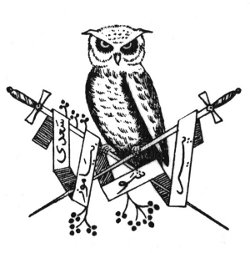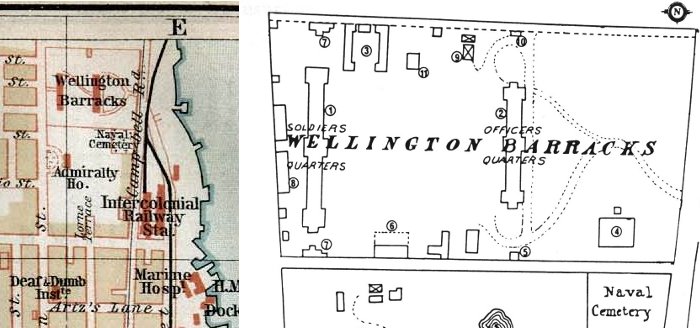Topic: CEF
 In 1917, Arthur Guy Empey, an American who served in France with the British Expeditionary Force, wrote the book "Over the Top." Pitched to the growing public interest in the War in the United States, Empey's story of his service, from his decision to go to England to enlist after the sinking of the Lusitania to his wounding and discharge, provided a tale of the popular hero doing the right thing. His narrative covers all the familiar ground of the Great War soldier, and reads as well today in harmony with popular perceptions of the War as it would have to his audience in 1917.
In 1917, Arthur Guy Empey, an American who served in France with the British Expeditionary Force, wrote the book "Over the Top." Pitched to the growing public interest in the War in the United States, Empey's story of his service, from his decision to go to England to enlist after the sinking of the Lusitania to his wounding and discharge, provided a tale of the popular hero doing the right thing. His narrative covers all the familiar ground of the Great War soldier, and reads as well today in harmony with popular perceptions of the War as it would have to his audience in 1917.
Empey's story, perhaps, fits almost too nicely with those popular perceptions, polished as they have been for us now by almost a century of repetitive descriptions of the same elements of Great War service. While some of Empey's tale might need to be taken with a grain of salt, even if only for the way his service seems to include every stereotypical experience of a soldier of the Western Front, we find that the included "Tommy's Dictionary of the Trenches" offers the best view that he is writing to entertain, perhaps more so than to educate. Some selected examples are included below:
"Any complaints" – A useless question asked by an inspecting officer when he makes the rounds of billets or Tommy's meals. A complaining Tommy generally lands on the crime sheet. It is only recruits who complain; the old men just sigh with disgust.
Bayonet – A sort of knife–like contrivance which fits on the end of your rifle. The Government issues it to stab Germans. Tommy uses it to toast bread.
C.C.S. – Casualty Clearing Station. A place where the doctors draw lots to see of Tommy is badly wounded enough to be sent to Blighty.
Crime Sheet. – A useless piece of paper on which is kept a list of Tommy's misdemeanors.
C.S.M. – Company Sergeant Major, the head non–commissioned officer of a company, whose chief duty is to wear a crown on his arm, a couple of Boer War ribbons on his chest, and to put Tommy's name and number on the crime sheet.
"Lonely Soldier" – A soldier who advertises himself as "lonely" through the medium of some English newspaper. If he is clever and diplomatic by this method hegenerally receives two or three percels a week, but he must be careful not to write to two girls on the same block or his parcel post mail will diminish.
Mentioned in Despatches – Recommended for bravery. Tommy would rather be recommended for leave.
Military Medal – A piece of junk issued to Tommy who has done something that is not exactly brave but still is not cowardly. When it is presented he takes it and goes back wondering why the Army picks on him.
"On the mat" – When Tommy is hauled before his commanding officer to explain why he has broken one of the seven million King's regulations for the government of the Army. His "explanation" never gets him anywhere unless it is on the wheel of a limber.
Runner – A soldier who is detailed or picked as an orderly for an officer while in the trenches. His real job is to take messages under fire, asking how many tins of jam are required for 1917.
Sergeant's Mess – Where the sergeants eat. Nearly all of the rum has a habit of disappearing into the Sergeant's Mess.
Trench Feet – A disease of the feet contracted in the trenches from exposure to extreme cold and wet. Tommy's greatest ambition is to contract this disease because it means "Blighty" for him.1
V.C. – Victoria Cross, or "Very careless" as Tommy calls it. It is a bronze medal won by Tommy for being very careless with his life.
1. Hardly a minor concern, trench feet could lead to severe infections and amputations. By the winter of 1915–16, trench foot was considered a crime and a unit could lose leave privileges if it became prevalent.





 For guidance on wearing of medals and ribbons, see the following guide:
For guidance on wearing of medals and ribbons, see the following guide:

 The C.E.F. Roll of Honour (1996)
The C.E.F. Roll of Honour (1996) Mentioned in Despatches of the C.E.F. (2000)
Mentioned in Despatches of the C.E.F. (2000) Guests of the Kaiser; Prisoners of War of the CEF 1915-1918 (2008)
Guests of the Kaiser; Prisoners of War of the CEF 1915-1918 (2008)
 Over 350,000 Canadians received the
Over 350,000 Canadians received the 
 While I do not know where the Canadian Forces currently stands on the possibility of Battle Honours being awarded for
While I do not know where the Canadian Forces currently stands on the possibility of Battle Honours being awarded for 


 The Royal Canadian Regiment
The Royal Canadian Regiment Anyone who has followed the news reporting around
Anyone who has followed the news reporting around 
 Sacred Places; Canadian Cemeteries of the Great War
Sacred Places; Canadian Cemeteries of the Great War Remembered; The History of the Commonwealth War Graves Commission
Remembered; The History of the Commonwealth War Graves Commission




 Militia General Orders
Militia General Orders It was during the first Fenian raids in 1866, that the only Victoria Cross to be awarded for actions in Canada was granted. This award, for an act of gallantry not in the presence of the enemy (which was allowed by the terms and conditions for the VC for a brief period) was earned by
It was during the first Fenian raids in 1866, that the only Victoria Cross to be awarded for actions in Canada was granted. This award, for an act of gallantry not in the presence of the enemy (which was allowed by the terms and conditions for the VC for a brief period) was earned by  From the excellent British service medals reference "
From the excellent British service medals reference " 13. Desertion, Fraudulent Enlistment, and absence without leave.—A distinction is made by the [Army] Act between desertion and fraudulent enlistment. The latter, which is constituted a separate offence bu s. 13 is dealt with hereafter.
13. Desertion, Fraudulent Enlistment, and absence without leave.—A distinction is made by the [Army] Act between desertion and fraudulent enlistment. The latter, which is constituted a separate offence bu s. 13 is dealt with hereafter.
 Connecting File, January, 1946
Connecting File, January, 1946



 For those interested in Canadian miliary dress, and headdress, over the ages, a new book on Canadian military headdresss is available that would be a welcome addition to the reference shelf of any collector, curator, or historian. “Fuss & Fashion” by Clive Law is available from Service Publications.
For those interested in Canadian miliary dress, and headdress, over the ages, a new book on Canadian military headdresss is available that would be a welcome addition to the reference shelf of any collector, curator, or historian. “Fuss & Fashion” by Clive Law is available from Service Publications.





